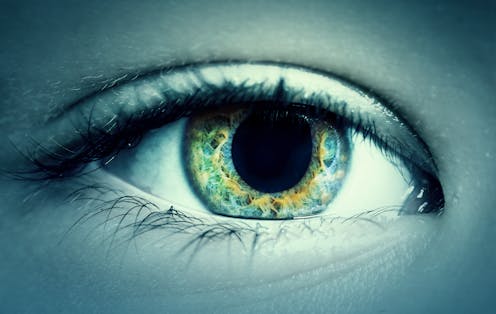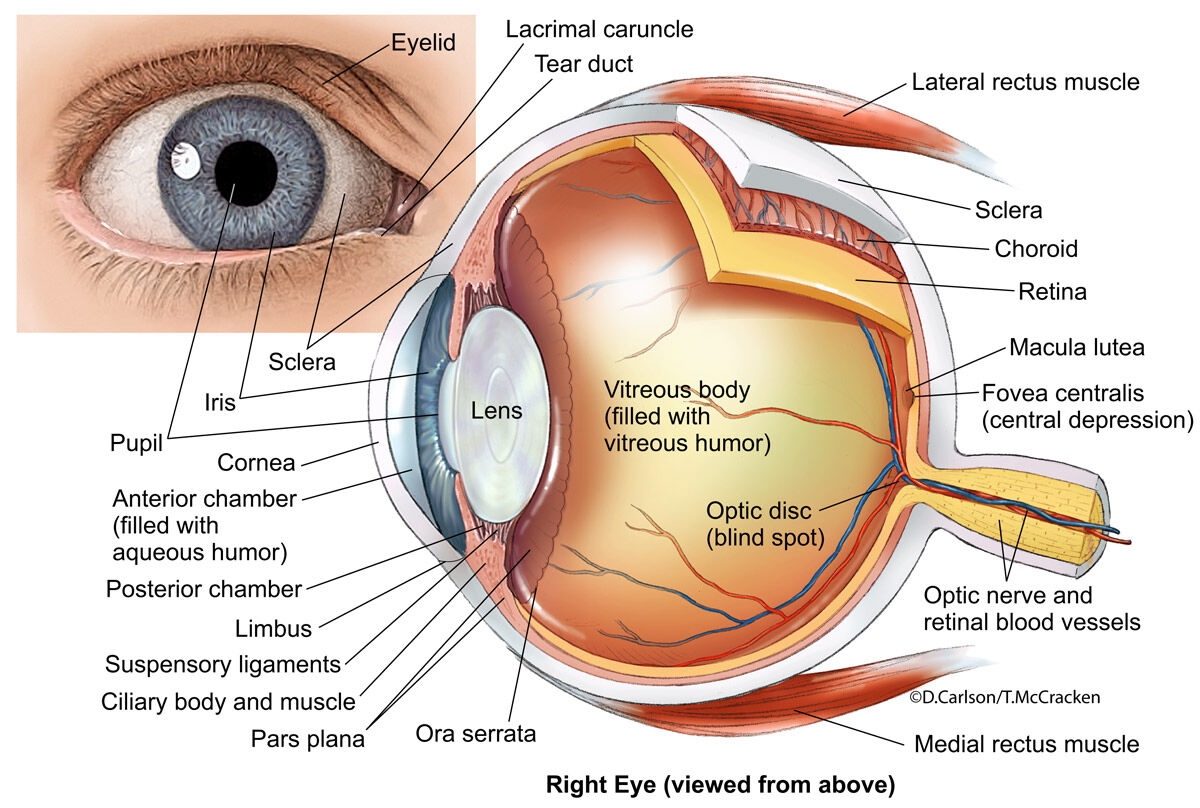 |
It contains two types of photoreceptors: sticks and cones numbering about 120 million sticks, 7 million cones, and cones are responsible for color sensitivity, as they allow you to distinguish up to 10 million colors.

You have to remember that the range of colors you see still depends on the main part of the eye, and this lens in the eye prevents the passage of ultraviolet rays, which makes it impossible for us to see them with the naked eye, and that's probably for a good reason First, it protects our eyes from UV rays and allows us to see clearer images.
However, the sense of seeing evolved in some animals to see ultraviolet radiation with the naked eye, such as spiders, mice, lizards, bees, and butterflies as well, as they can see ultraviolet rays without any problems, and this allows them to see more details, more than we can.
 |
| From left to right: human vision, a simulation of bee vision and butterfly |
A cataract is a condition in which the vision becomes very dark, leading to vision loss. In order to fix this problem, surgeons remove the damaged lens and replace it with an artificial lens to help with better vision, and the patient during surgery is under local anesthesia.
For this reason, he may not notice the removal of his lens most of the time, especially since this is done incredibly quickly, and Claude Monet (1840-1926) is one of the painters whose cataract developed in the 1920s, so he agreed to remove the lens completely At the age of 82, the surgery was completed in 1923 AD.
Although Monet removed his eye lenses, he continued to draw, and flowers remained one of his favorite subjects, but they looked different. When most people looked at water lily flowers appear white, and after Monet's surgery, his blue dyes were able to capture some of the bouncing UV rays from some The flowers.
 |
| The same scene before and after lens surgery |
David Hambling says: `` Even with the lens removed - a condition known as "Aphakia" - the patient still sees; because the lens is only responsible for about 30% of the intensity of the eye's focus. Normal, as they were able to see ultraviolet radiation, and some artificial lenses are also UV transparent.
Receptors in the eye of blue light can see UV rays better than blue, and military intelligence is said to have used this talent in World War II, recruiting observers without a lens to monitor the coast from German boats, and issuing signals to their agents through ultraviolet lamps.
 |
| A patient with aphakia |
The world will look very different with ultraviolet rays, for example: the males and females of some types of butterflies may look identical to the naked human eye, but in reality they are very different to the ultraviolet sensitive eyes, and scientists have tested this, and they have found that males appear in bright patterns in order to attract females. As the picture shows

It appears that removing the lens from our eyes may give a miraculous vision, but it would destroy the retina of our eyes, and prevent us from seeing high-resolution images, and it is certain that somewhere, somehow, and someone may invent glasses that enable us to see UV rays without any harm.

No comments:
Post a Comment